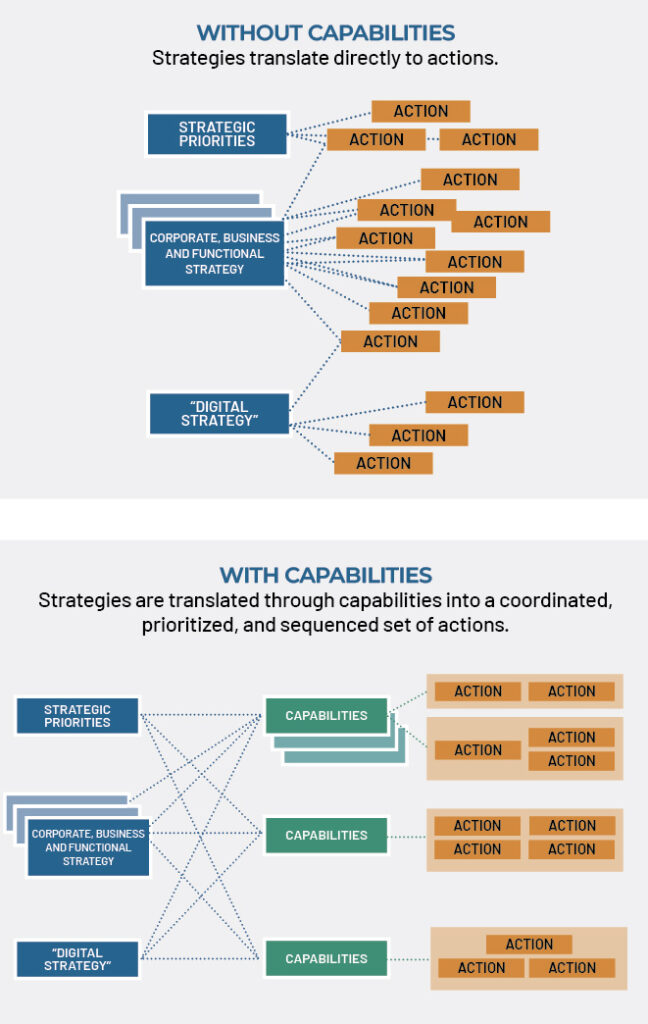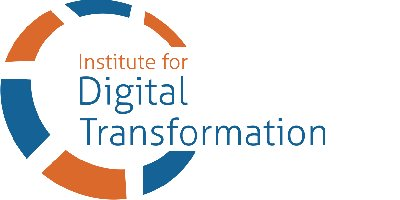Transformation Needs an Enterprise Approach and Enterprise Citizens.
One of the most memorable and impactful experiences I’ve had with organizational culture was in a Fortune 500 company undertaking a major shift to become fully customer-centric. The organization was already highly mission-driven and customer-oriented, but at one point, the leaders acknowledged that to truly be exceptional at customer experience, they could no longer continue working in silos as they always had.
The CEO began repeating a simple but powerful mantra: Everyone needs to be a good enterprise citizen.
The change in behavior across the organization was almost immediate and striking. The same set of business unit leaders who, just a month earlier, had seemed disconnected and perfunctory in their meetings, were now volunteering to sponsor cross-organizational initiatives and demonstrate their enterprise citizenship.
Transformation requires people across an entire organization to come together as an enterprise. Short-term and siloed thinking and ways of working are ineffective because transformation is about longer-term bets and always requires cross-organizational collaboration. Whether the goal is to present as one company for customers, streamline operations for effectiveness and agility, or entirely reinvent the organization, transformation depends on everyone acting as enterprise citizens and working together. We must not only succeed in our individual roles but also take ownership for the shared goals and outcomes for the organization as a whole.
Become a Capability-Driven Enterprise.
One of the most effective ways I have seen organizations shift from siloed to enterprise thinking, is by striving to become a capability driven organization. This concept offers a simple yet effective way to institutionalize the type of holistic, systemic, and interconnected thinking that is essential for transformation.
If we think about capabilities as the high-level abilities (or reusable business building blocks) that an organization performs to deliver its products and services and support its operations, independent of organizational structure or processes, they provide an ideal lens for enabling people to think and act from an enterprise perspective.
The shift to becoming capability driven starts with intent, commitment, leadership, and mindset. Declare that your organization will be a capability driven enterprise as an organizational imperative, or, at a minimum, define it as a guiding principle for transformation. Set specific goals to create visibility and ensure tangible progress. These methods have worked for other organizations, especially when reinforced through leadership, culture, performance management, and motivation mechanisms.
A Capability-Driven Enterprise is Strategic, Aligned, and Effective.
Capabilities serve as the bridge between strategy and execution by informing strategic decision making and ensuring that strategies are translated into a coordinated, prioritized, and sequenced set of actions for the enterprise. (See figure below.) They also help keep the portfolio of work aligned even as strategy evolves. Since capabilities are enabled by people, processes, information, and technology, they naturally integrate these elements and their design into a cohesive whole. Capabilities also provide the reusable building blocks that enable an organization to deliver consistent and seamless experiences to customers, partners, and employees.

© Brian H. Cameron and Whynde Kuehn from The Execution Challenge (Wiley 2024)
A New Mindset Leads to New Outcomes.
A capability driven mindset leads to new behaviors, ways of working, and measurable outcomes.
A capability driven enterprise:
- Builds a shared business vocabulary and mental model (through an enterprise capability map) that unites the organization
- Communicates strategic direction with clarity and in an actionable context for individuals through capabilities and related business perspectives
- Scopes and prioritizes work around capabilities to ensure the portfolio aligns with strategic priorities and resources are utilized effectively
- Establishes cross-functional business ownership, governance, and investment around capabilities
- Synergizes business and technology solution investments and designs around capabilities to promote reuse leading to greater effectiveness, consistency, and agility
- Designs and orchestrates consistent, seamless experiences for customers, partners, employees leveraging reusable capabilities
- Aggregates change across capabilities to understand and manage the collective impact on stakeholders
- Maintains continuous alignment of strategies, capabilities, initiatives, and solutions
- Dynamically replans work as strategies or conditions change leveraging capabilities to assess impact and support decision making to guide realignment
- Measures outcomes of initiatives and solutions to confirm they achieve defined business objectives and enhance targeted capabilities
Take the Journey to Become Capability Driven.
Becoming a capability driven enterprise is journey that takes time, but each step brings greater clarity and value. The most important thing is to start taking practical steps forward.
- Establish the enterprise mindset and culture. The journey to become capability driven is fundamentally a human journey and it begins with intent. Establish an organizational imperative or principle to become a capability driven enterprise, reinforced by goal setting, leadership, culture, performance management, and motivation mechanisms. Communicate the why clearly and inspire people to contribute to the collective success.
- Create an enterprise capability view. The foundation of a capability driven enterprise is a shared understanding of what the organization does. Develop a capability map together with a cross-functional group of business experts. This map represents the organization’s high-level capabilities from a business perspective. There are well-defined techniques and reference models that can accelerate this process. In addition to capabilities, ideally define a set of enterprise value streams as well to place capabilities into a broader business value context. (Capabilities can be reused many times across value streams.)
Importantly, focus on shifting mindsets and delivering outcomes – not perfecting the map. The map is a means to an end, so once you have a solid enough version, move quickly into practical action.
Start taking the journey towards becoming capability driven. Identify situations where a capability mindset can help to drive meaningful outcomes for the enterprise. Two ideal starting points are applying a capability lens to strategic portfolio management decisions and leveraging capabilities to translate a new or refreshed strategy into action. Start learning, evolving, and building advocates, and gradually expand the use of capabilities across the organization.
This is a journey of change, and it happens one step and one person at a time. Lead with conviction, keep the faith, and trust that the results will be worth it to create a stronger, more capable organization for today and tomorrow.
Tag/s:ArchitectureBusiness TransformationOrganizational Change





